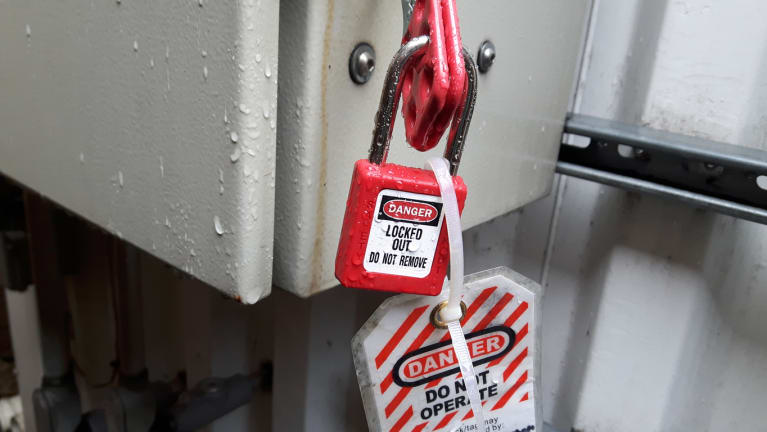

?Manufacturers’ increasingly advanced robotic systems have made the Occupational Safety and Health Administration’s (OSHA) standard for the control of hazardous energy (lockout/tagout) impractical, even obsolete, in many workplaces. The new technology is forcing a change in a standard that appears among the top 10 cited by OSHA each year.
Proposed by OSHA in September 1979 and finalized 10 years later, OSHA’s lockout/tagout standard regulates the control of exposure to unexpected energization during service and maintenance on machines or equipment. Among other provisions, the standard requires that all sources of energy, including energy stored in the machine itself, be controlled during servicing and maintenance of machines and equipment using an energy-isolating device (EID).
But control circuit-type devices, such as push buttons and selector switches, are specifically excluded from OSHA’s definition of an EID. Because of technological advances since the standard was issued, OSHA has recognized that control circuit-type devices may be at least as safe as EIDs.
In the 33-year span since the lockout/tagout standard was finalized, the proliferation of robotic systems, particularly mobile robots and collaborative robots that work in tandem with human workers, has complicated the standard’s implementation. The agency could not have contemplated the recent and rapid advancement in robotic systems.
These systems can move independently and adapt to new circumstances and information in a workplace. The machines “think” while they work. Shutting such systems down is a lot different and more complex than simply locking out a traditional, standalone piece of industrial equipment and is not always particularly practical, especially if de-energization causes a machine to lose calibration.
Yet enforcement of the standard when applied to robotics can have serious consequences. OSHA can penalize serious violations up to $15,625 per infraction. An even more significant threat lies not in monetary penalties, but in abatement requirements, if the agency requires a manufacturer to discontinue the use of its robotic systems and effectively debilitate operations.
In addition, strict adherence to the standard could introduce logistical problems. Some newer systems have such precise calibrations that de-energizing them could introduce inaccuracies that would render the system ineffective. In other cases, de-energized systems incur costly slowdowns or shutdowns, making operations prohibitively expensive and possibly less safe.
To deal with this, many robotic systems have been designed to undergo maintenance in a safe manner without de-energizing them, a potential violation of the standard. Increasingly, manufacturers and other employers have asked OSHA to embrace safe robotic systems, often through requests for variances from the standard. OSHA may grant a variance if an employer can demonstrate the infeasibility of de-energization and the safety features that make maintenance of an energized system as safe as or even safer than adherence to the standard.
OSHA Request for Information
The agency has seen fast changes since its promulgation of the lockout/tagout standard, and new realities are demanding change. Recognizing these realities, in 2019, OSHA issued a request for information seeking “information regarding two areas where modernizing the lockout/tagout standard might better promote worker safety without additional burdens to employers: control circuit type devices and robotics.”
The request is intended to assist the agency in determining the conditions under which control circuit-type devices could safely be used for the control of hazardous energy. The request is a potential precursor to a potential update to the standard to accommodate the use of the evolving technology of robotics, as well as the use of control circuit-type devices to isolate energy.
In the meantime, employers using robotic systems may need to continue to seek variances to ensure the agency deems their processes are safe and compliant.
Courtney M. Malveaux is an attorney with Jackson Lewis in Richmond, Va. © 2023. All rights reserved. Reprinted with permission.
